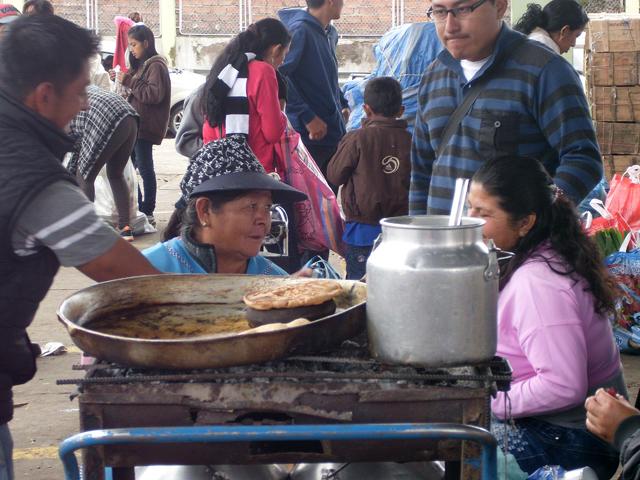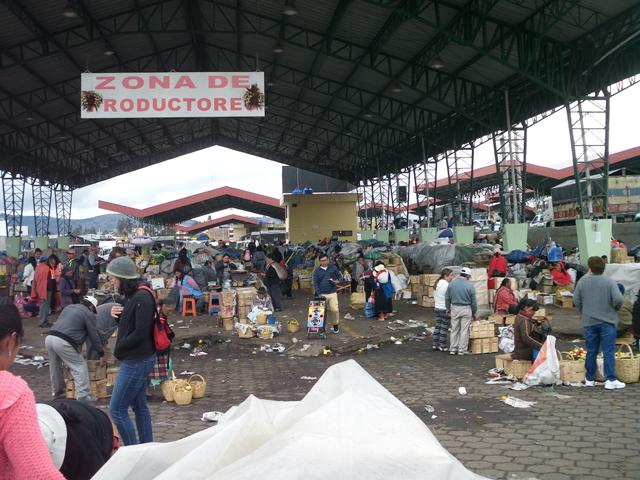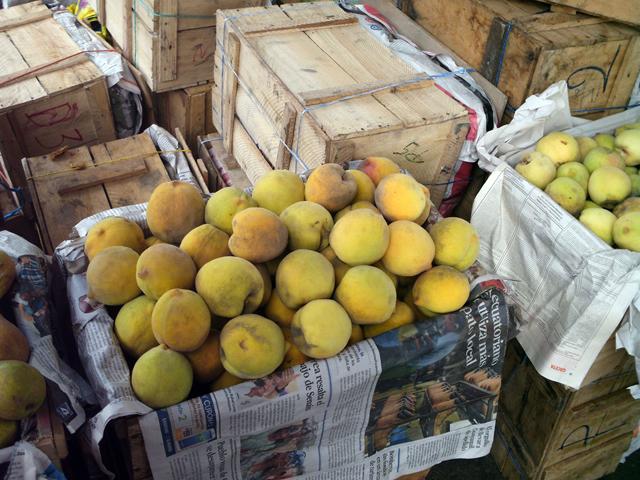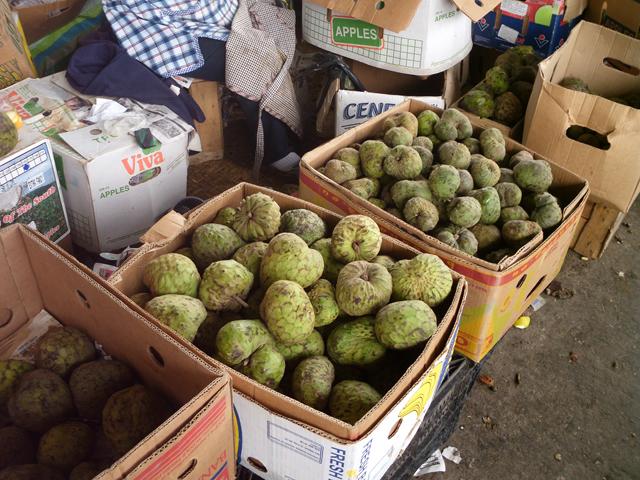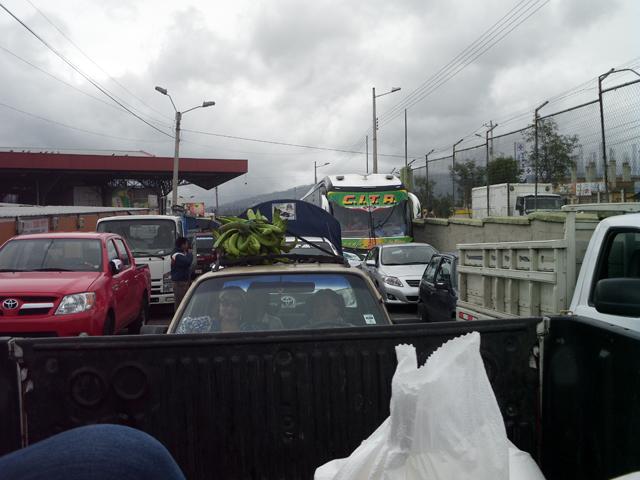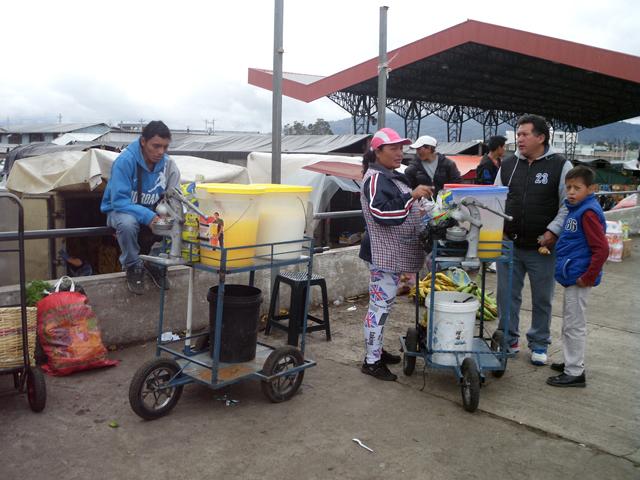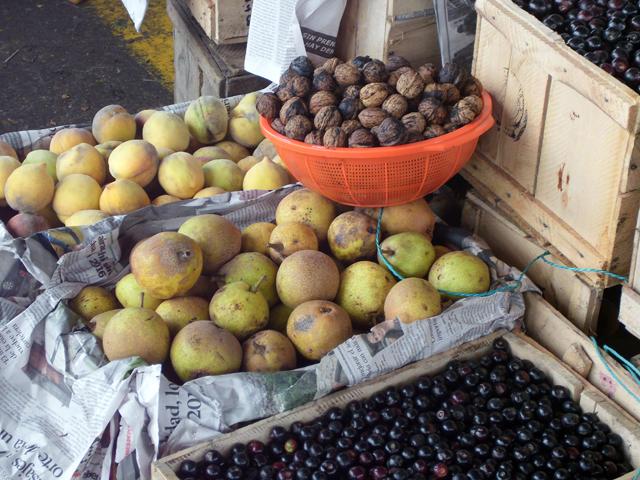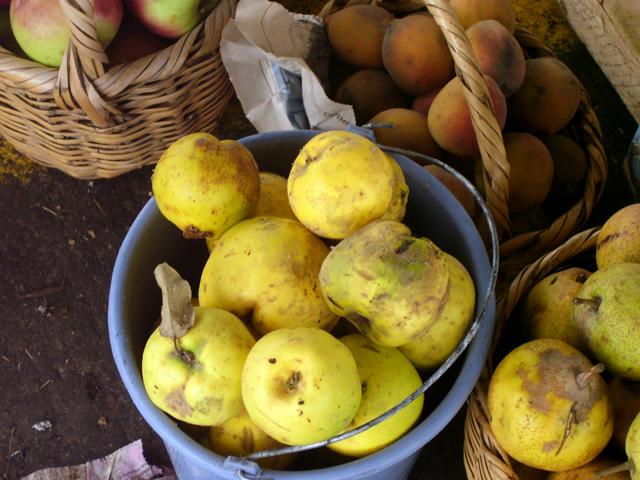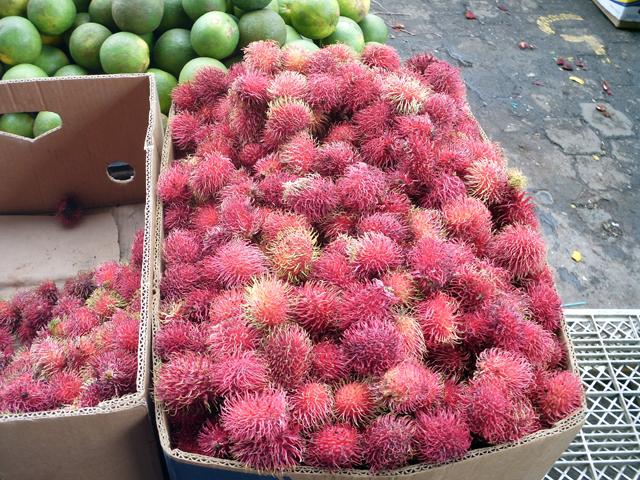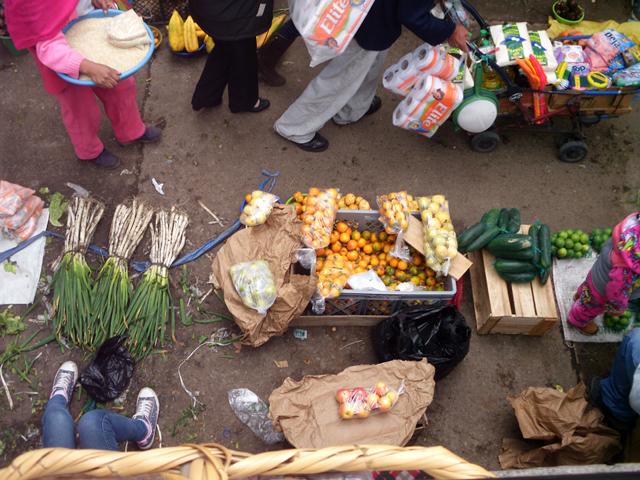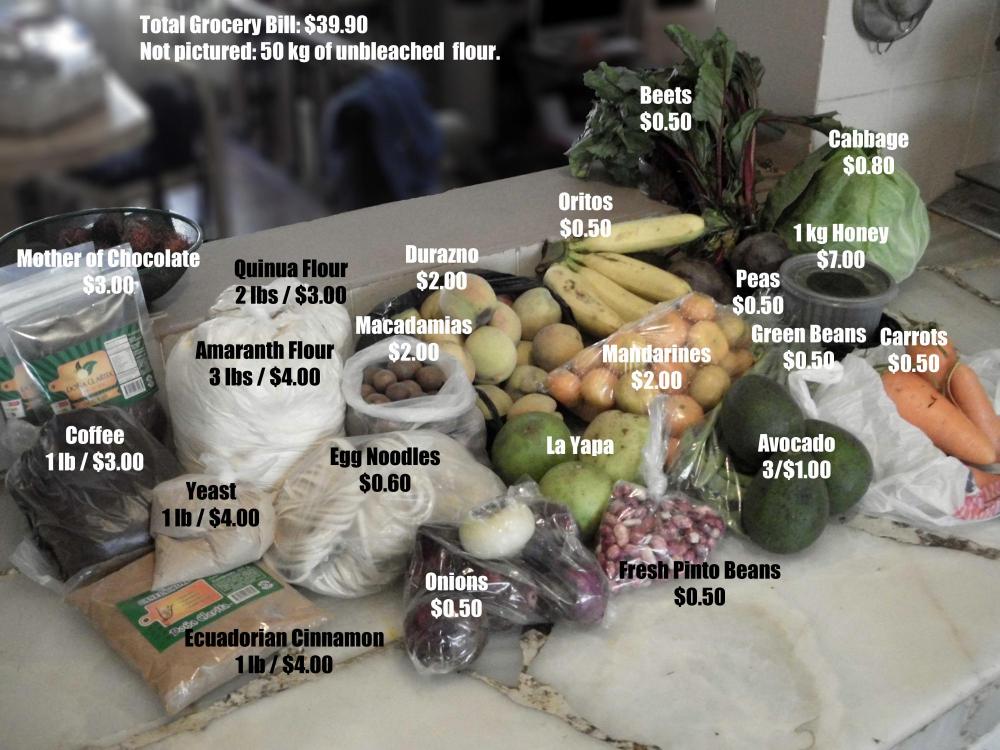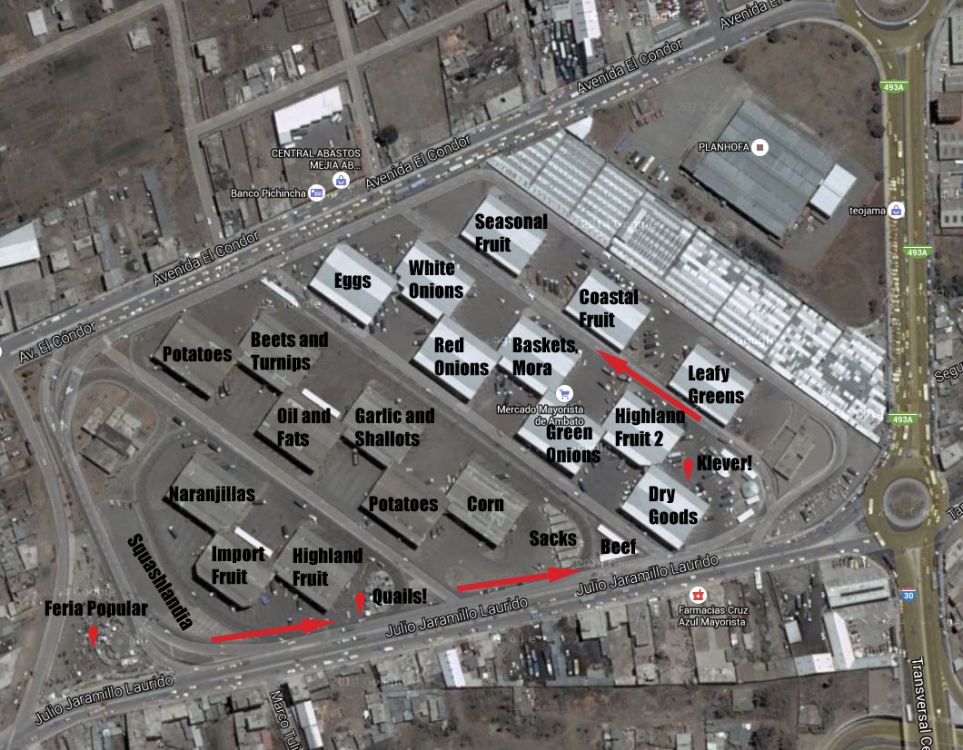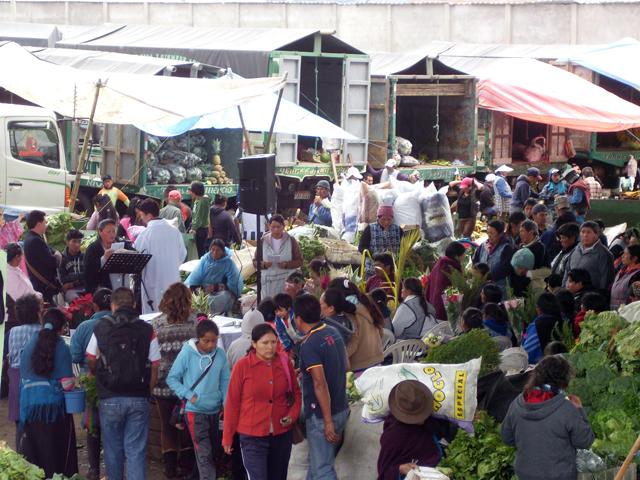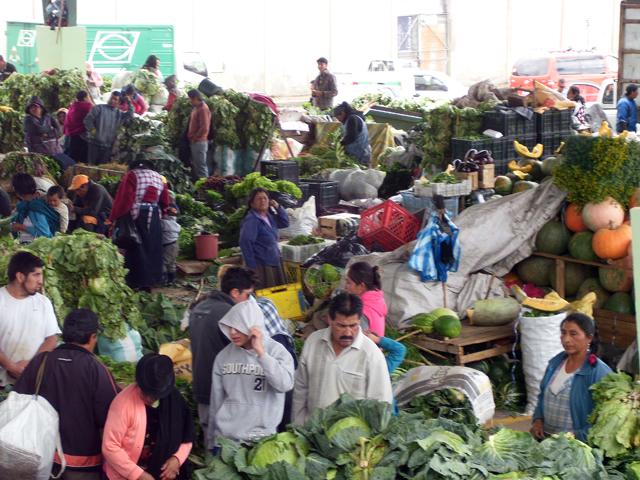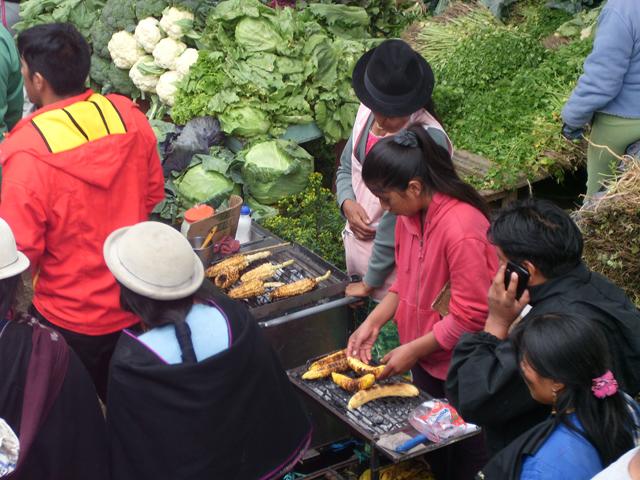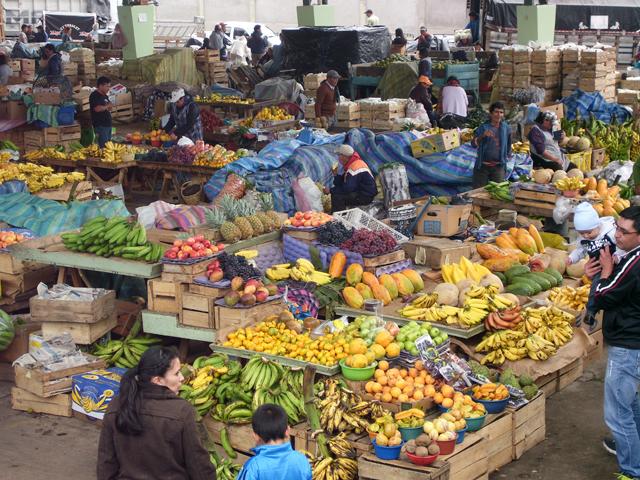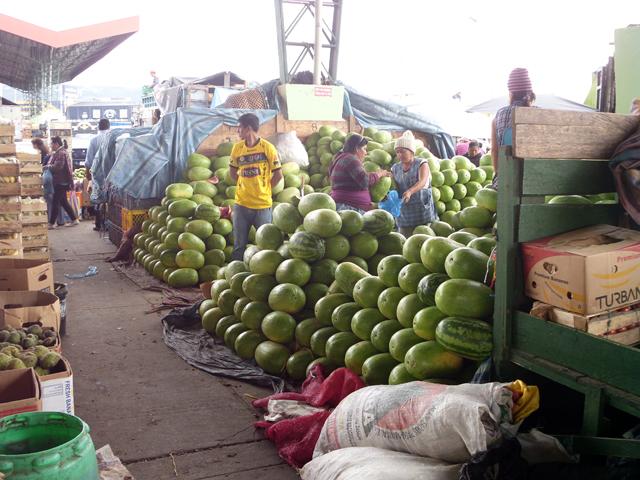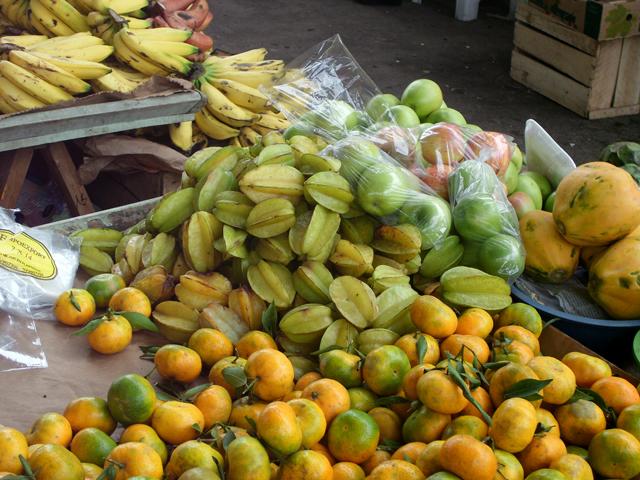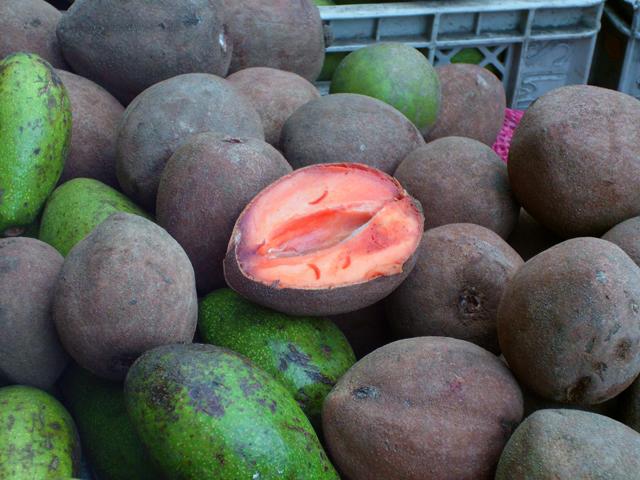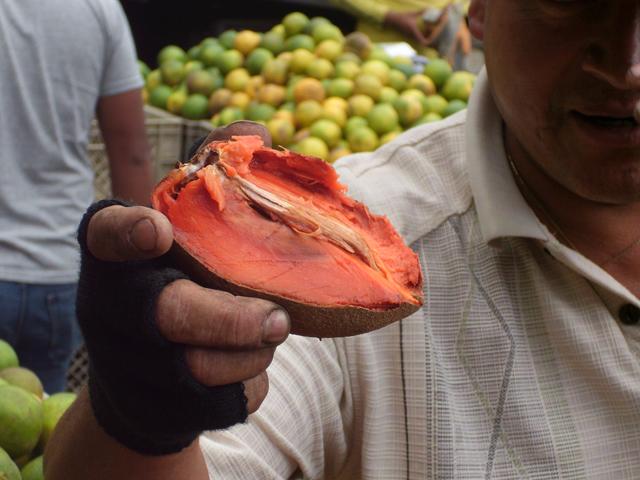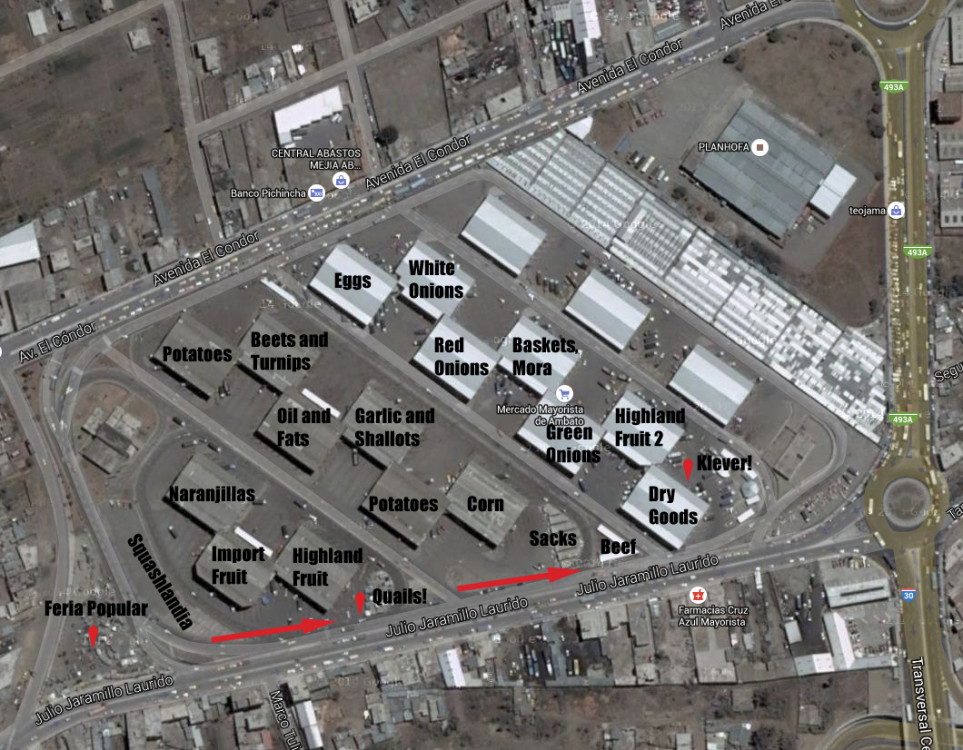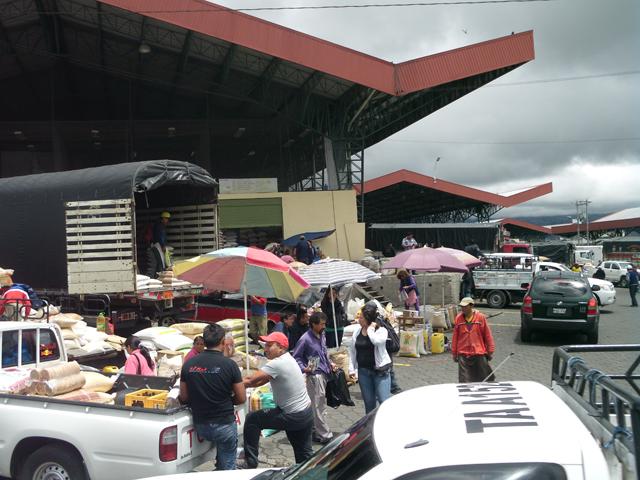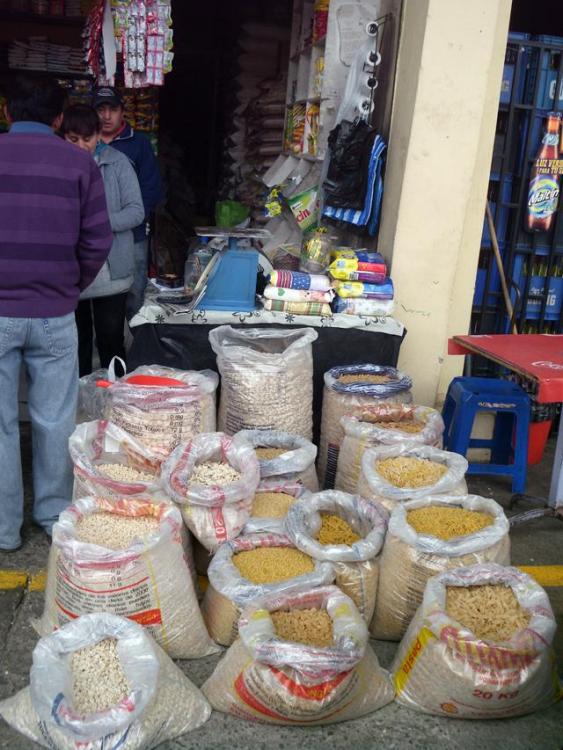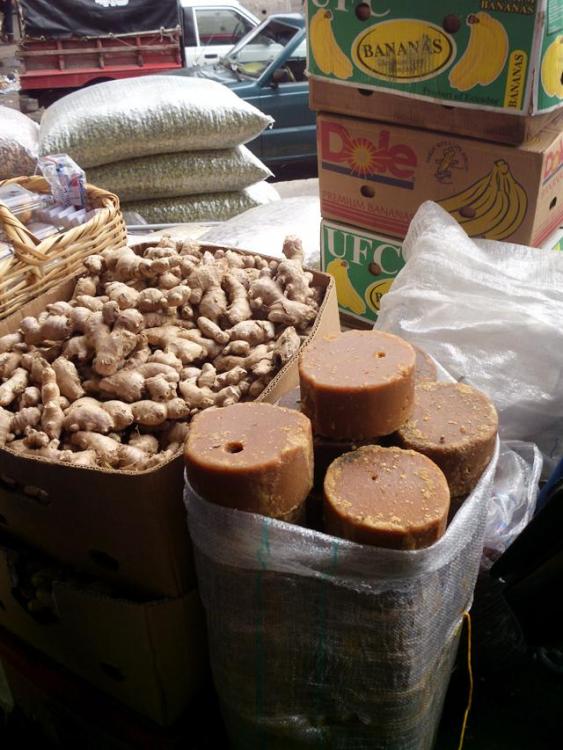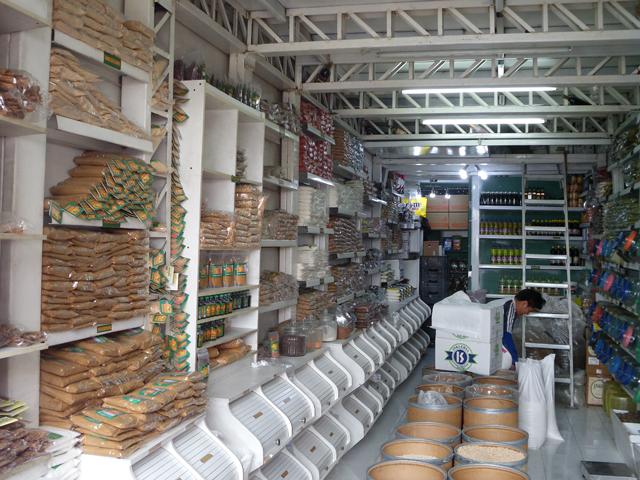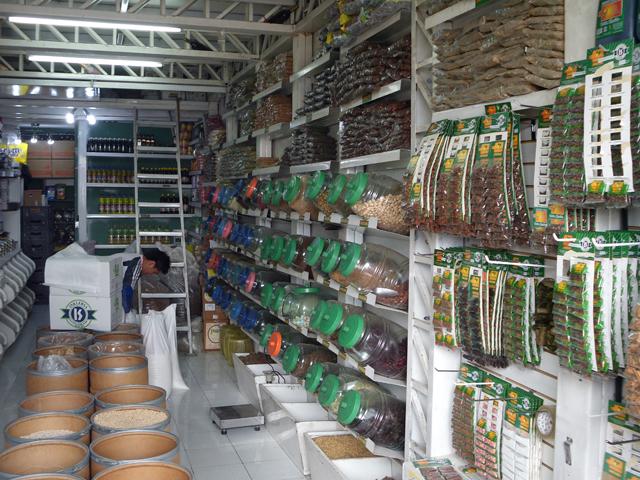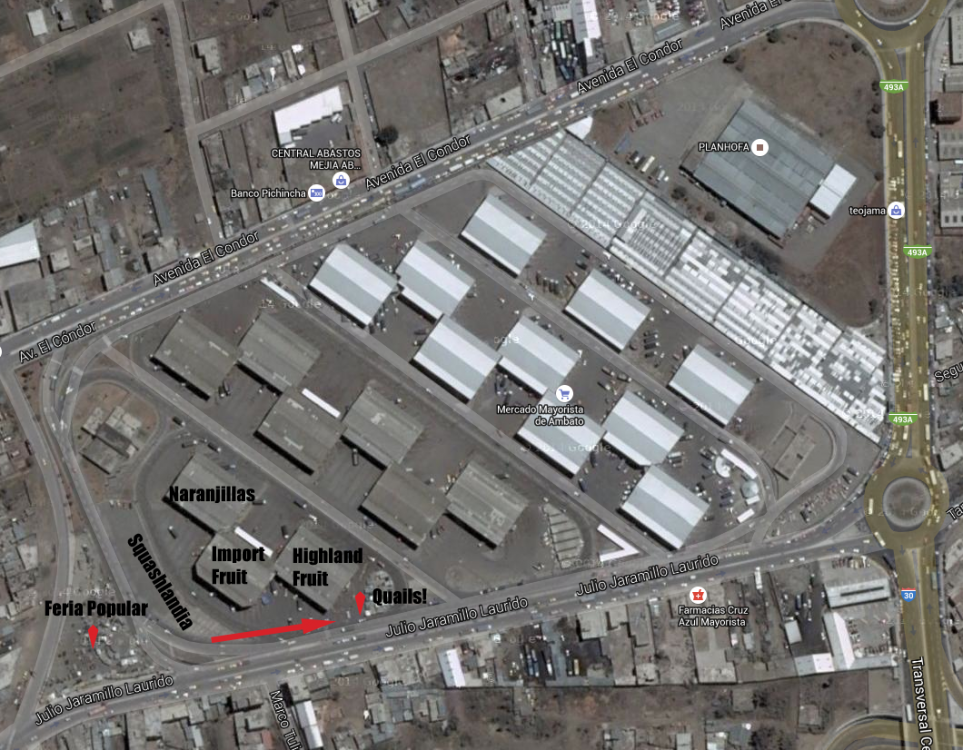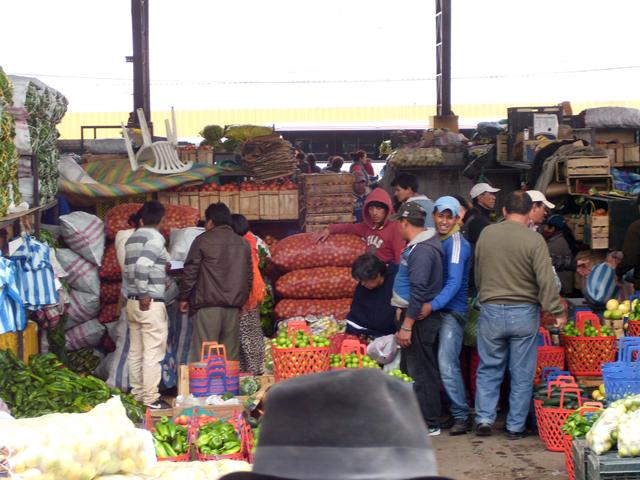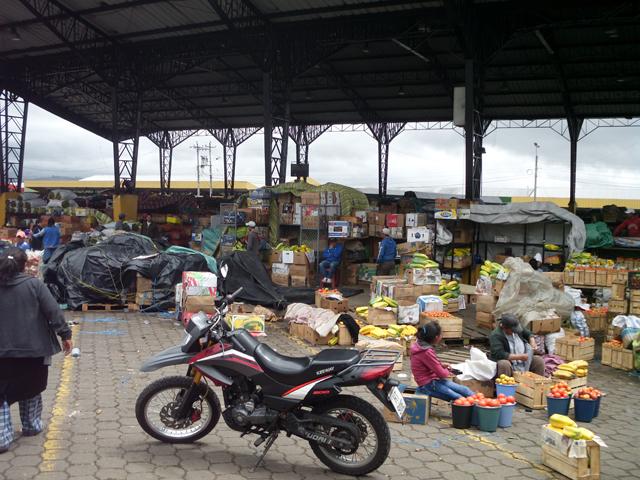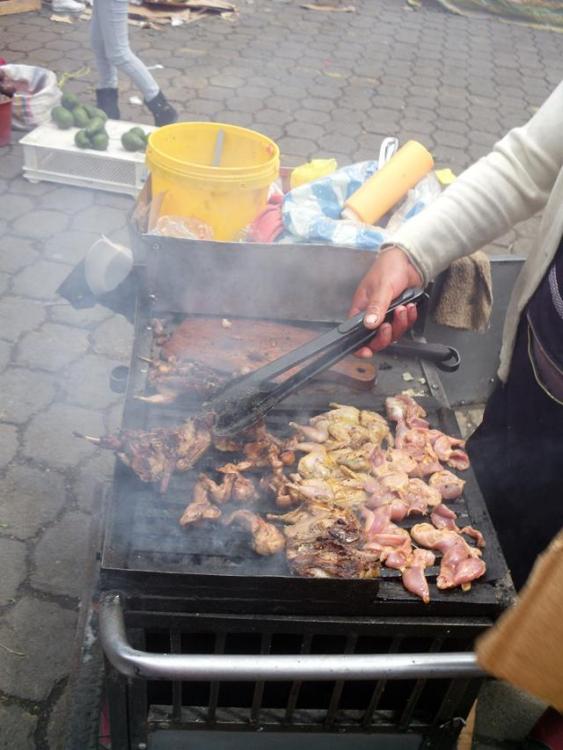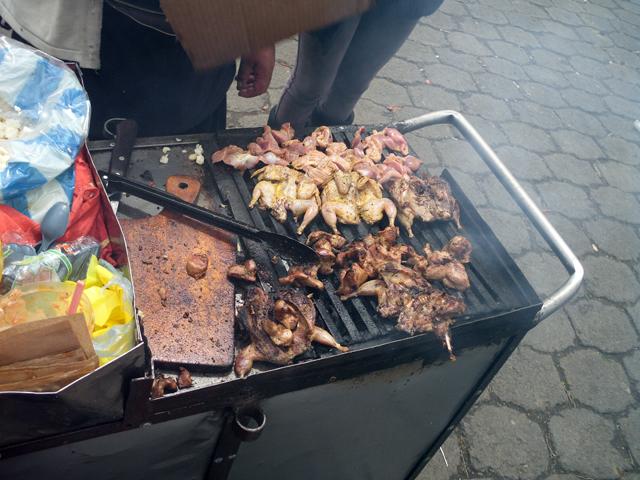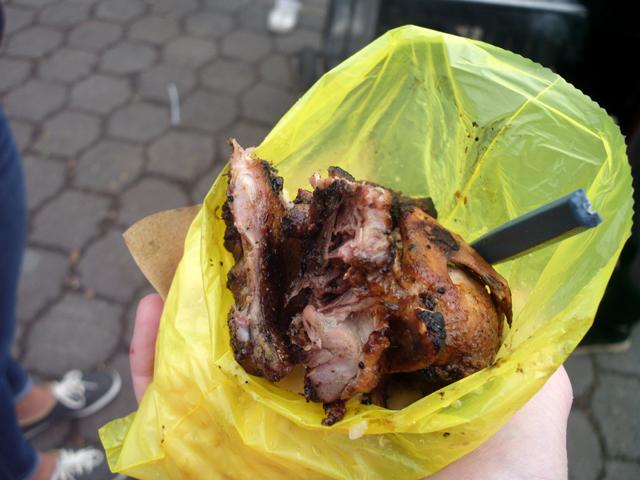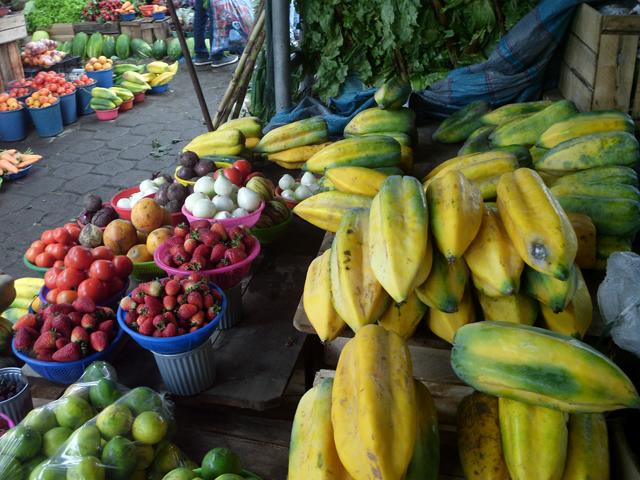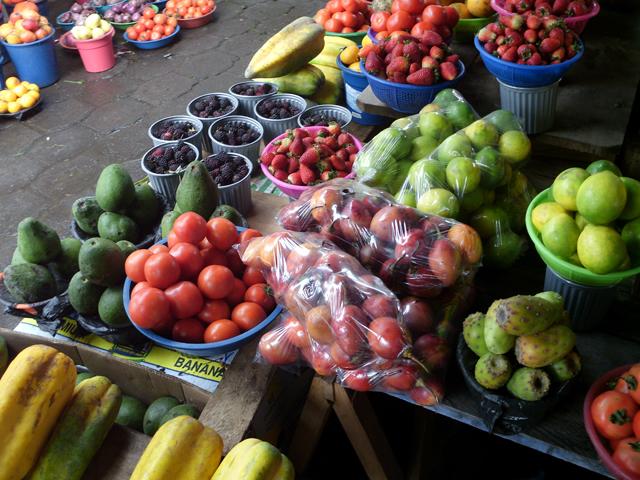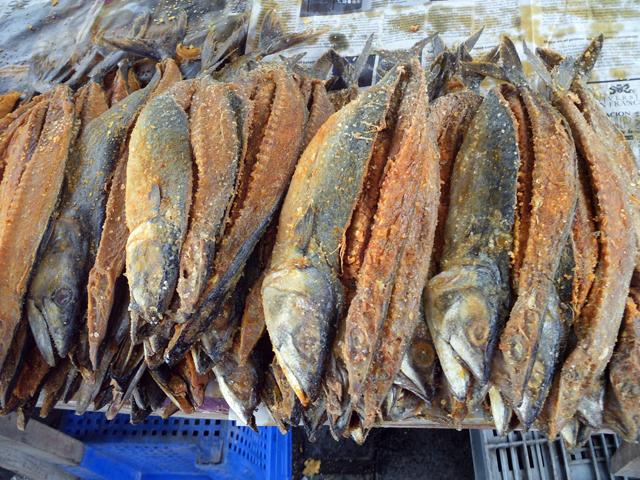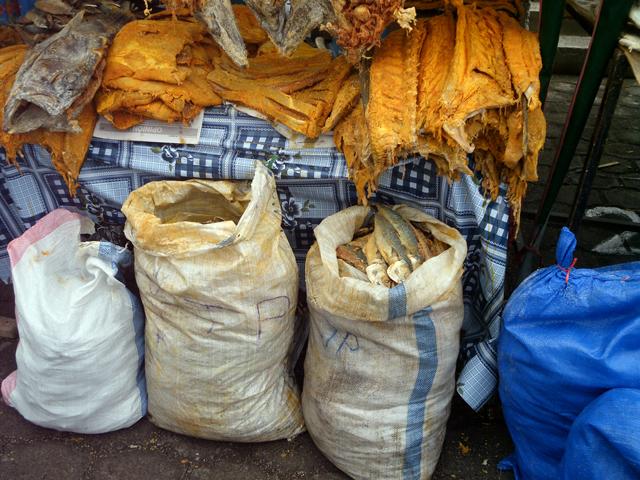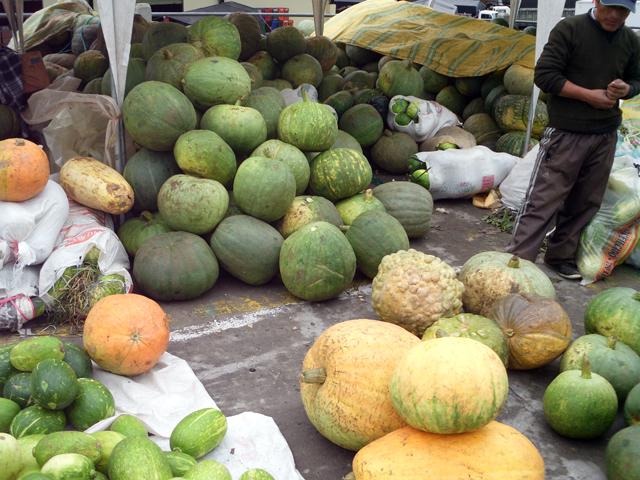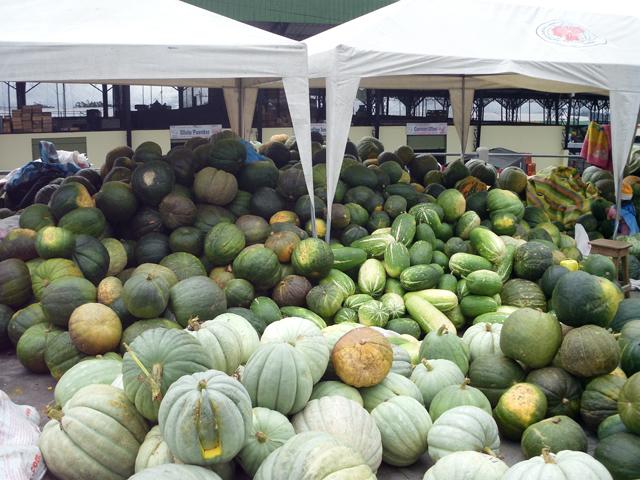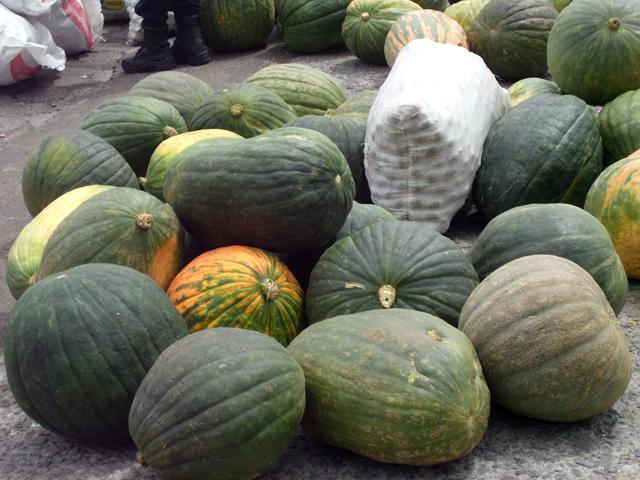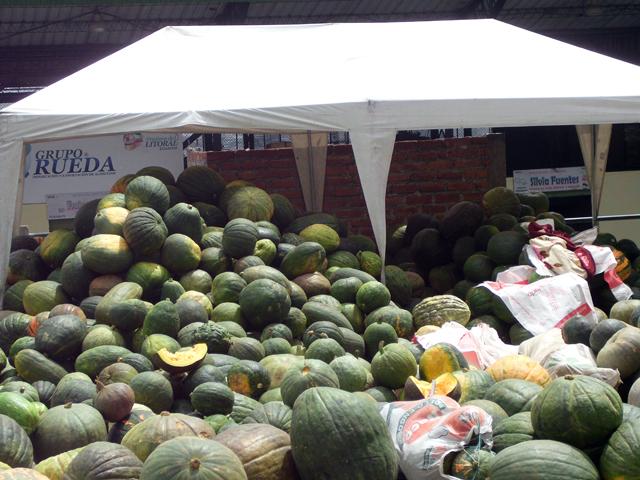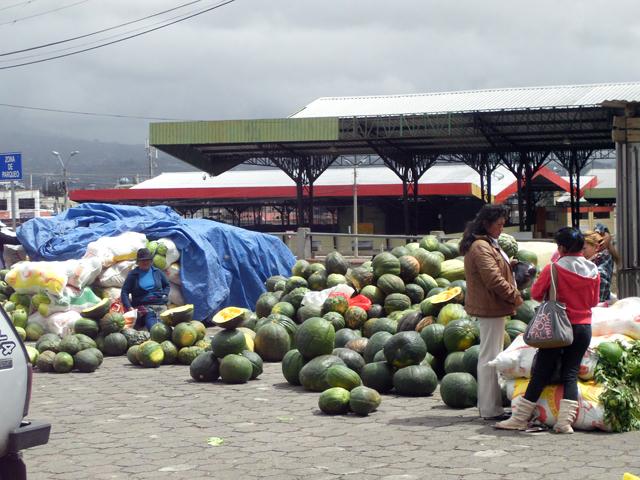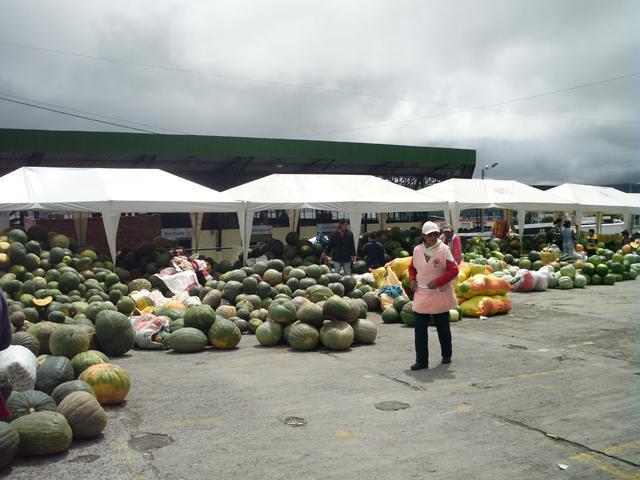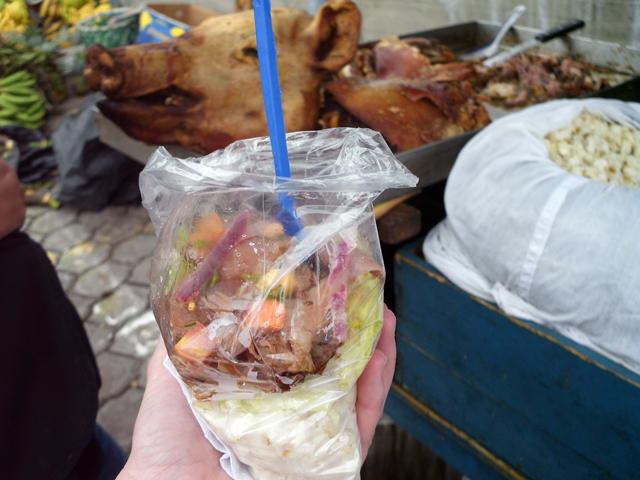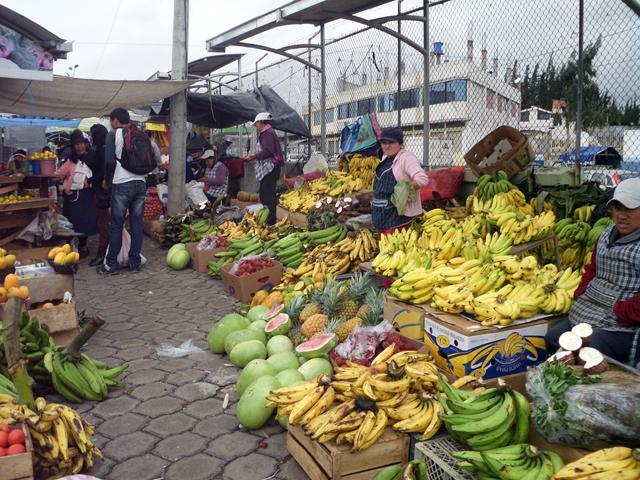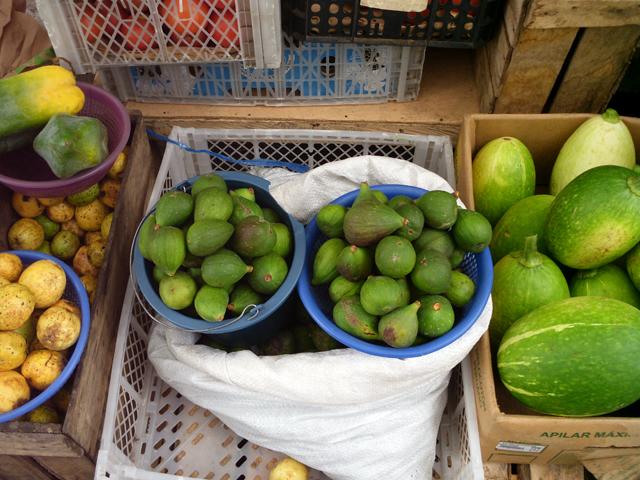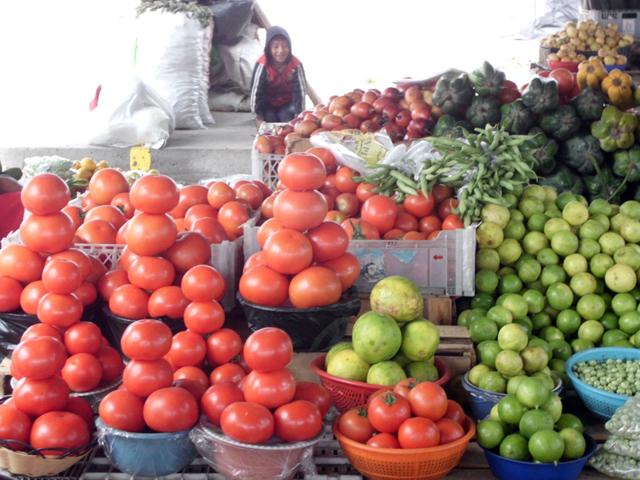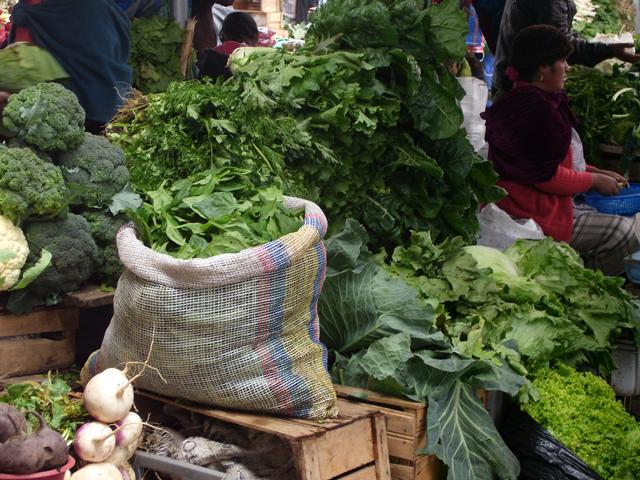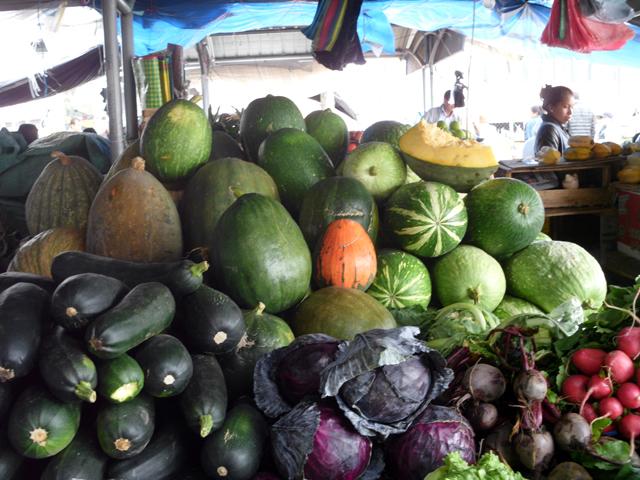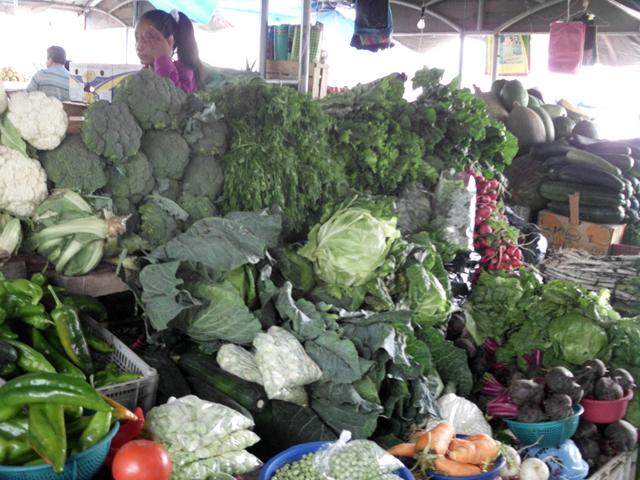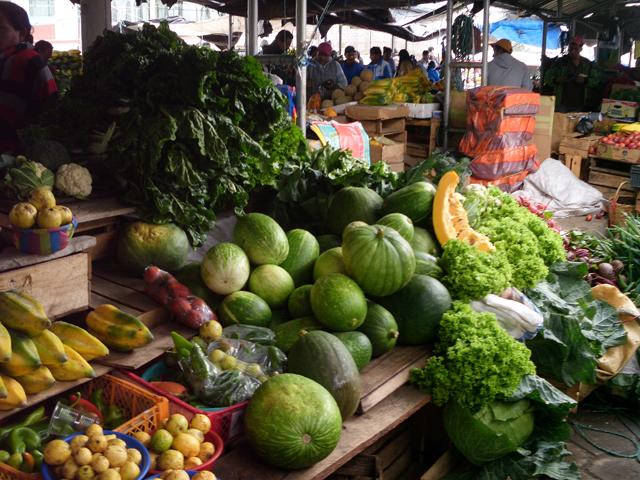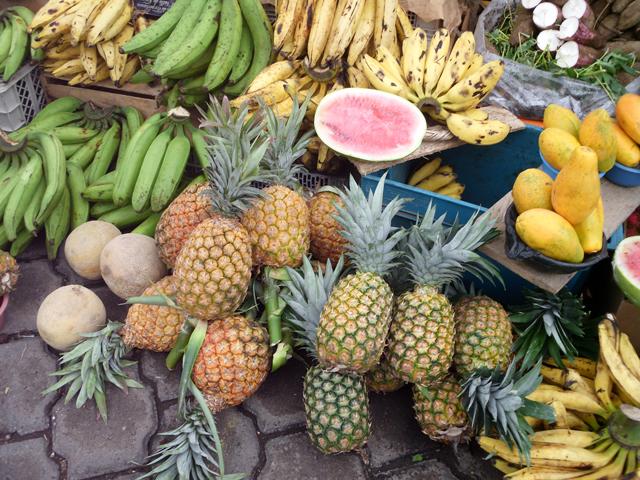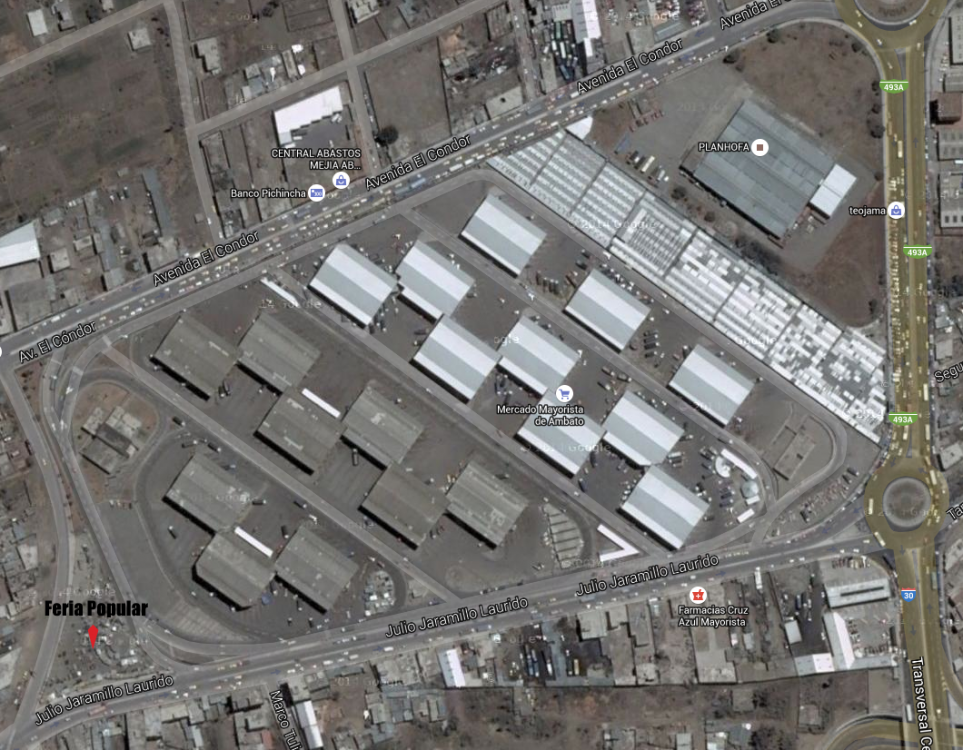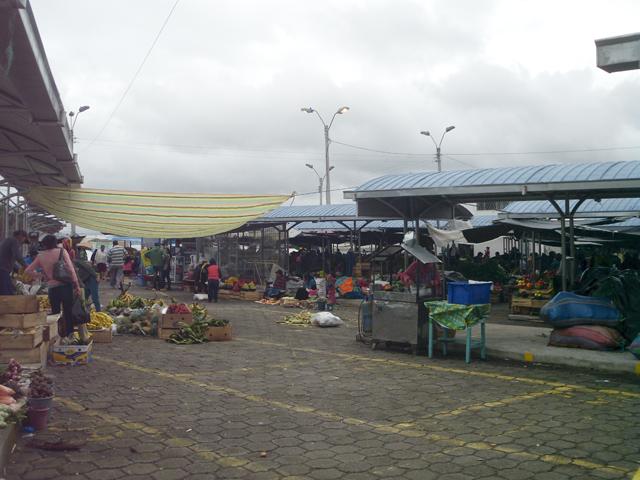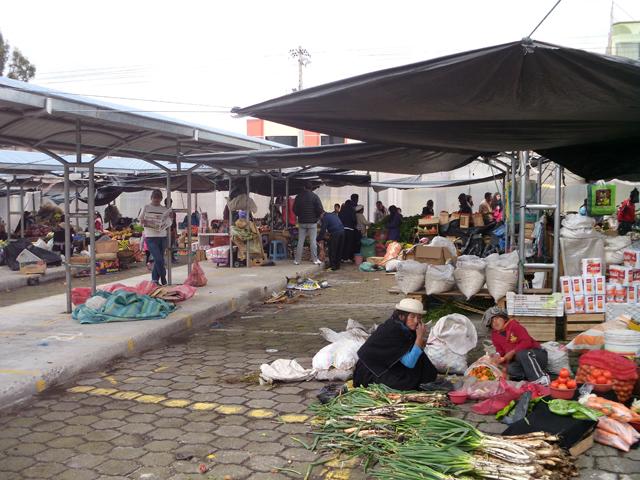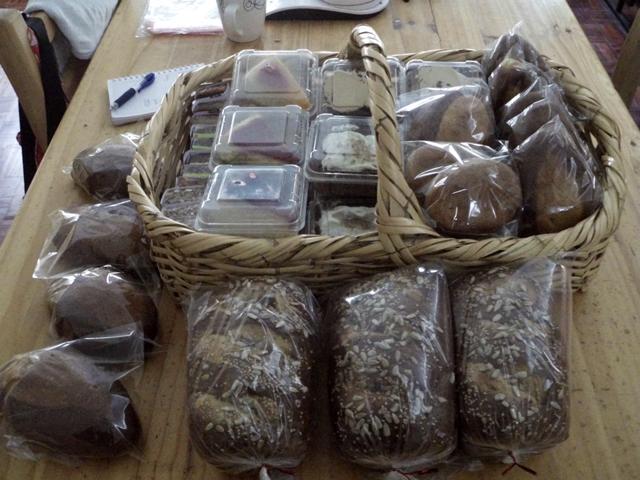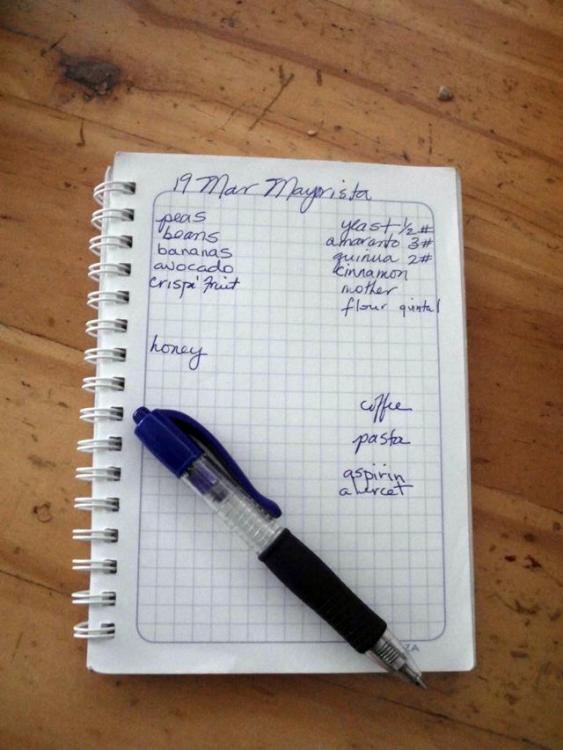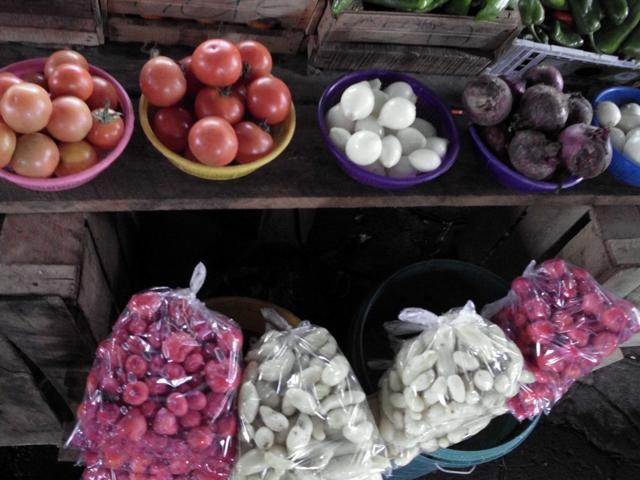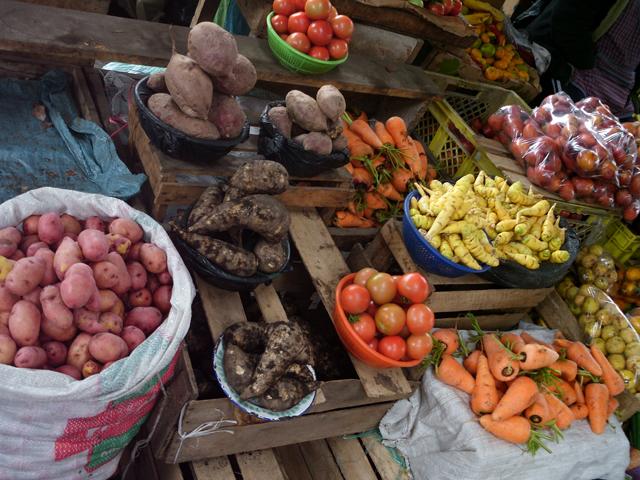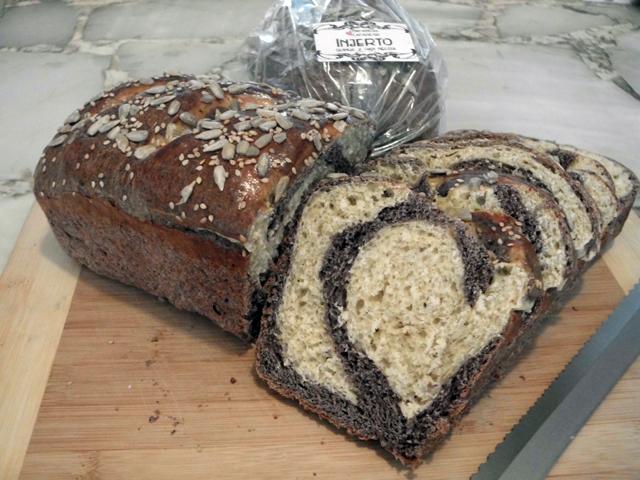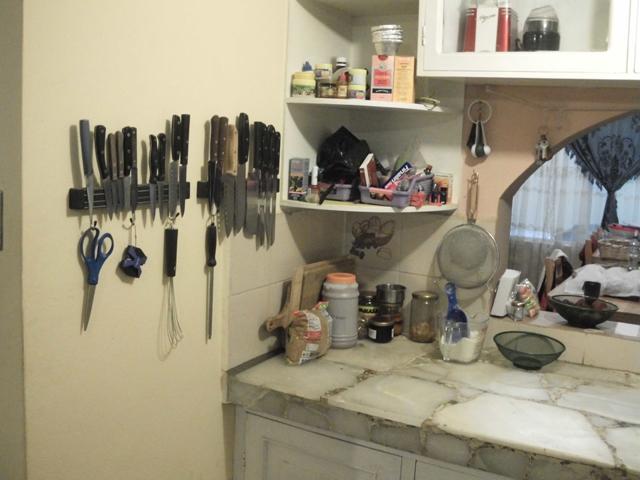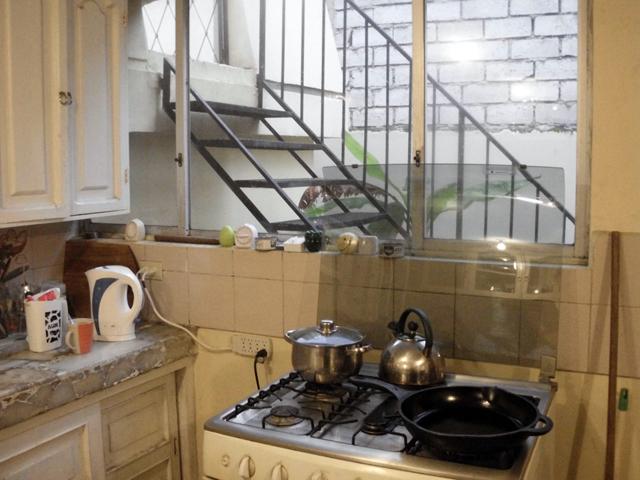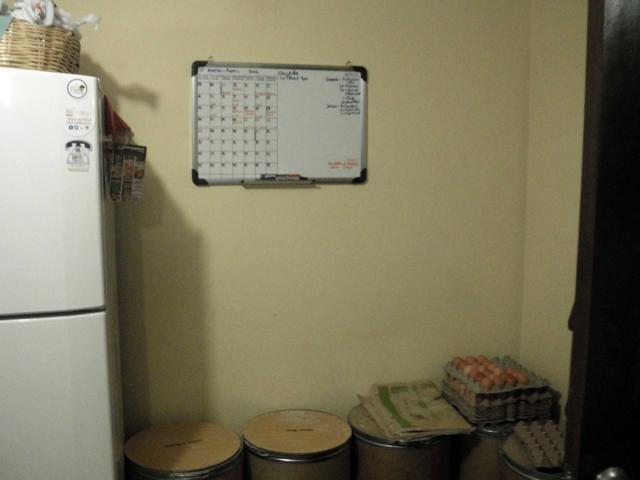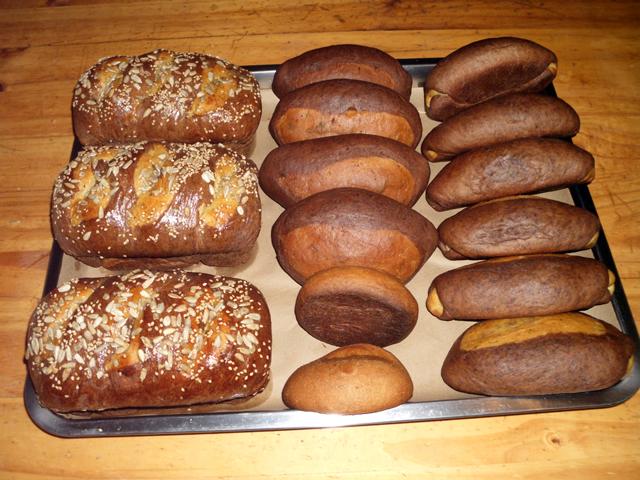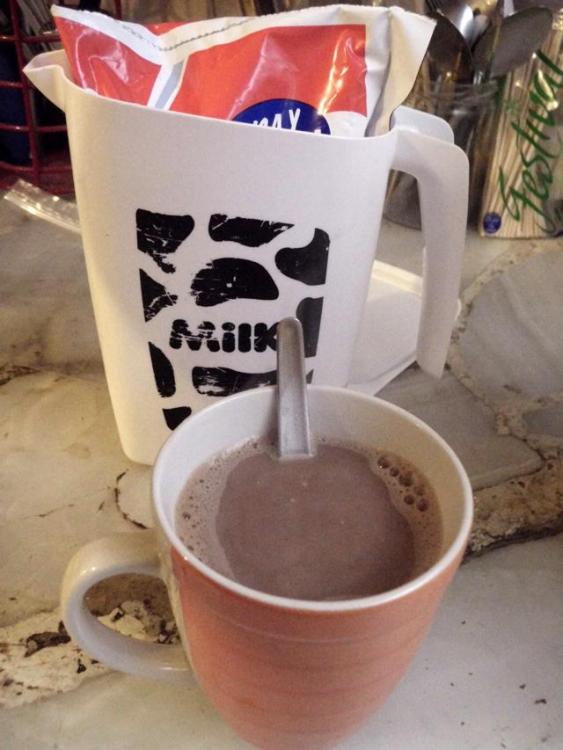-
Posts
2,383 -
Joined
-
Last visited
Content Type
Profiles
Forums
Store
Help Articles
Everything posted by Panaderia Canadiense
-
Sweet corn. Oh my, what I wouldn't give for a nice sack of Taber corn, peaches-n-cream variety. Ecuador excels at starchy corn, but because the sweet stuff is photoperiod and altitude sensitive, it just won't grow here (I've tried, and been reduced to tears by the experience.) Apart from this, there is nothing in Canadian produce that I can't find here, depending on the season. I actually like Capulí a bit better than "standard" cherries, since they're not so cloying. Nope, this is all after the fact. I'm sitting on my duff in the comfort of my living room, drinking an Ovaltine, breaking my journey into digestible bits, and then posting them as sections. The Mayorista is something you have to finish before noon if you want choice in your produce. Secondarily, I carry a dumb-as-bricks burner phone and a small, inexpensive 14 MP point-and-shoot camera - anything flashier is an invitation to theft, especially when the market is crowded. Even if I give the impression of it, I'm never posting as I go.
-
The last stop before catching a truck-taxi and heading home was Seasonal Fruits - our honey vendor is in this area, and we needed duraznos (a type of highland peach that's currently in season). Also currently being harvested are Achiotillos (rambutan) - there wasn't enough space in Coastal Fruits for this vendor. More highland harvest includes tart, green-fleshed Capulí (highland cherries), more prickly pears, and a type of tropical-adapted Pippin apple from Tisaleo canton, which is upslope of Ambato and one of the only places in the country where even adapted apples will grow. Membrillo (Quince) are just starting to make an appearance - this bucket was $5, which is exorbitantly high. As the harvest comes in the price will drop to more reasonable levels and I'll make marmalade. El Niño has also brought us a second harvest of Andean walnuts, and extended the apple-pear season by several weeks. Chirimoya are also starting to come in from farms in Manzana de Oro and Cevallos canton. These are fairly small and will be more bitter than the late-harvest fruits; as the harvest progresses they'll get larger and sweeter. Small vendors of everything from green onions to naranjilla to cucumbers line the retaining walls of each nave. Also hiding down here is the arepa cart. These are Arepa de Guaranda, a soft buckwheat pancake filled with sharp, salty fresh cheese and cooked on a brass tiësto over wood fire. These are one of my favourites, but I was too full by this point to consider one. The milk can is filled with warm Horchata, a typical herbal tea. On the way to the trucks, I couldn't resist a cup of freshly-squeezed orange and coconut juice. It's only 50 cents, and so refreshing! As usual for this time of day on a holiday-sized market, there were traffic jams on the way out. It took about 30 minutes to get from Dry Goods to the gates of the market, which are up by Potatoes. Vehicles of all sizes come to the Mayorista to shop - right behind me was a beat-up old Toyota Corolla with plantains that wouldn't fit in the trunk strapped to the roof. The CITA interprovincial bus was packed to the rafters, every seat, with sacks of fresh fruit. Here's the haul, and what we spent.
-
My final set of stops here involve the Coastal Fruit nave, which is on the lowest terrace of the market. I would also have gone into Leafy Greens for a head of red lettuce and some fresh dill, but they were holding a Palm Sunday Mass there, and it was beyond crowded. It's not visible in this photo, but there's a band led by an electric guitar. Catholic services here are a really intriguing blend of stoic, reserved oratory and outright joyful noise. The overcrowding was a real pity, because there was also a grilled plantain cart down there, and a sweet grilled plantain filled with soft cheese is a wonderful dessert. I was actually headed towards Coastal Fruits, because we had yet to find the bananas we were looking for. We never did see good Rosados, so we went with Oritos instead. It is the tail-end of Mango season and the beginning of the second harvest of Carambolas. And watermelons, which come from the north coast province of Esmeraldas, are in season, in various cultivars and sizes. But I was also on the hunt for oranges. Unfortunately, the Sevilles I was looking for aren't due for harvest for another week or so - heavy rains delayed the pickers in Caluma, Ecuador's orange capital. My orange vendor friend did, however, have something interesting: Mamey. These are a fruit with hard brown shells, one big pit, and creamy, pumpkin-custard flavoured flesh. It is unusual to see them in this season, but we're in an El Niño year which does give us (along with flooding and road-slides) a second harvest of some fruits, Mamey among them. They're stacked here alongside smooth Alligator Pear avocados from the central coastal plains.
-
Onwards and downwards, now fully sated, I bypass entirely one of the market terraces. I don't need bulk sacks of anything that's on sale here (nor do I need a sack of sacks.) I'm heading towards Nave J, Dry Goods, and my friend Klever, a miller and spice dealer. He's the one who ordered the large loaves of bread. In this area, I need pasta (sold by the pound) and a few things including an entire quintal of unbleached wheat flour. Especerías Doña Clarita, Klever's shop, is one of about 30 under this roof. It's far better organized than most of the others. Klever supplies most of the city's restaurants with herbs, spices and dried grains. Nave J is also home to the rice sellers, who spill over into the parking area. It's possible to buy rice here by the pound, or in 10-, 25-, 50-, and 100-pound sacks.
-
Next up, downhill. To get to the lower section of the market, where I'll find the remainder of my list, I need to traverse the market along its main perimeter road, which parallels Av. Julio Jaramillo inside the market fence. I'm going to make a quick stop, though, in front of the one-square-block sized Nave where Highland Fruit is sold in case lots. If you need 20-50 lb cases of tomatoes, babaco, peppers, limes, or lemons, this is your stop! That's right - every one of the roof sections you see in this photo is roughly a square block of covered space. I don't normally buy anything at Highland Fruits - I rarely have call for that much volume. However, I do have a reason to stop here. The Quail Cart is normally found in the parking area! A spatchcocked quail, liberally doused in aliño and grilled over charcoal, costs $1 and comes on a bed of mote. The lady who runs the cart will often give you a grilled molleja (chicken gizzard) to whet your appetite while you wait for your quail to finish - because she will serve no quail before its time! You can also apparently buy a mixed bag containing two quails and a dozen mollejas - I have never been so hungry as to consider this option; I know how filling even one quail is despite its small size. For ease of consumption, the quail is cut into rough quarters before being stuffed into the bag. Not pictured is me eating like an utter barbarian - when eaten properly and with gusto, this is finger food. One will inevitably end up with quail grease running down one's chin and fingers that must be licked clean, and a big grin because it's absolutely delicious. Also, because I omitted Mom's breakfast upthread…. Papas con Cuero are a popular street food dish here. The potatoes are cooked in a thick, rich curry sauce with strips of pig skin and chunks of liver, and it's all served over gold rice. You can add a hardboiled egg for $0.25, but Mom usually declines this in favour of extra sauce in a $0.75 bowl (which is more than enough to fill up even a hungry teenager). She'd eaten so much of it by the time I got back with my bag of Hornado that all I can show you is the cart where the goodies are cooked over wood fire.
-
Man, and I was complaining that it was miserable out today, only 15 C and spitting rain…. Here's a bit more of the fruit variety. The big yellow fruits are Babaco, a native fruit related to Papayas. They're usually used in juices, where the flavour is slightly sparkling tropical (for lack of a better descriptor - they're something that kind of needs to be experienced.) Green-skinned, pale-fleshed avocado from the valley of Patate are dominating the field this week. And Tunas (prickly pears) are just beginning to make an appearance. Also, because this is Palm Sunday, the little overflow parking lot in the middle of the Feria Popular has been converted into the World of Bacalao. There's a bit of everything salt-fish available here, from big true bacalao (cod)…. …through smoked or unsmoked and salted Mero (grouper)… …and even smaller fishes like Corvina and Barracuda. The Feria of Bacalao fills the entire perimeter of the lot. It is an aromatic stop on the tour of the Feria Popular - I could actually smell that it was there when I came in the main gates, which are about 500m distant from it. Our last stop in the Feria Popular is another temporary market that appears especially on Palm Sunday: Squashlandia. Along with Bacalao, various types of squash are vital ingredients of Fanesca, the traditional Eastertime stew. Squashlandia is about one city block long; there are no squashes less than 10kg here, although you can buy pieces from some vendors. The smaller, bright green gourds in the lower left of this photo are Zambo. I believe English-speakers know these as Cidra (Curcubita ficifolia) - they've got stringy white flesh, tasty black seeds, and a pleasant flavour somewhere between cucumber and bitter melon when they're underripe, which is generally how they're sold for Fanesca, since ripe ones are quite sweet. More Zambo, along with a couple varieties of green-skinned pumpkin. Tiger Pumpkins. The squashes are stacked about 2m tall in some areas. Also available in this sector, although mysteriously absent from my photos, are some prizewinning giant zucchinis about as large around as my thighs.
-
And because I didn't have breakfast (on purpose!) it was also definitely the time to hit up the Hornado vendor! This is pulled suckling pig that's been roasted in a wood oven, served with mote (exploded flint corn), lettuce, and encebollado (a salad made of quick-pickled red onion and tomato in lime juice with cilantro).
-
Abundance is the keyword at this market - everything is here, and there's a lot of it. Yes, those are massive white-fleshed pineapples. The watermelons in the photo are of fairly average watermelon size, and the pineapples match them. At this point in the year, most things are oversized, and none more so than the squashes. Veggies are also hugely abundant and we enjoy amazing variety.
-
And this morning was the ever-changing and marvellous adventure that is the Ambato Mercado Mayorista! This is the country's, and indeed the continent's, largest fresh food market. It's laid out in sectors, and Google's satellite imagery was obviously taken on a sunny but deserted Saturday (the only day in the week when the Mayorista isn't in full operation.) I'll try to address it that way, too - it's kind of an overwhelming experience to shop here, even if you know what you're in for. The Mayorista opens at 5am on Sunday morning; I generally get there around 10am, once most of the vendors have arrived and set out their goods. I should also mention that when I go to the Mayorista, it's not purely as a purchaser - I'm also an ambulatory vendor. The basket generally looks kind of like this; I use the opportunity to sell off anything left from Friday's and Saturday's deliveries. And here's the Mercado Mayorista, as seen from space. What the satellite view doesn't show at all is that the market is built in terraces on a hillside; the top of the hill corresponds to the left-hand side of this image, and it's where we're going to start. This is the Feria Popular, a collection of smaller stalls that functions as a free-for-all farmer's market on Sunday and Monday, and has established vendors who remain there throughout the week. The market, even when it's full to what feels like bursting, generally has a few empty stalls near the side gates. Sellers are an eclectic mix of farmers, farmers' wives, mestizos, indigenous, and others. A tremendous variety of everything is on display and on sale. Vendors normally group their produce according to fruit or vegetable, but beyond that it's all piled high. This set of photos shows some of the traditional Andean tubers - Melloco (red), Ullcu (white), Mashua (yellow carroty-looking things), and the more familiar potatoes. It's not quite Oca season yet. The parsnip-looking things in this photo are actually a traditional tuber called Zanahoria Blanca (literally "white carrot" and properly Arracacha, Arracacia xanthorrhiza) - while distantly related to true parsnips, they are wildly different in flavour and texture, much closer to a sweet, slightly crisp potato. Behind them are Camote, a local variety of purple-hearted sweet potato. A size comparison between Melloco and new potatoes.
-
Sure! Those are a traditional style called Pan Injerto (literally, "Grafted Bread") where two types of bread are rolled together and baked. I do it a little differently than most Ambato bakers - a fully traditional Injerto is a white water bread grafted with a richer golden yolk bread; mine are enriched quinua herb (a whitish crumb) together with a black bread based on cornmeal, coffee, and chocolate. It comes out looking something like this when you slice it - depending on who's rolled it out, it's either a loose heart-spiral like this photo (my stepdad), or a much tighter spiral (myself). It is an ideal bread for sandwiches. The lightness and mild sweetness of the quinua bread balances the weight and bitter-sour tendency of the blue cornbread. Overall it's about 55% whole grains, 45% unbleached white at about 55% hydration (I'm not terribly scientific about it - when combining and kneading, I add flour until the dough "feels" right under my fingertips.) The doughs are takeoffs on my standby challah recipe - if you'd like, I can give you the general proportions of non-wheat to wheat flours and other adjuncts.
-
Ambato has a large enough permanent Jewish population to have a rabbi, a cantor, and a beautifully appointed temple. I may end up making hamentaschen for Moishe, the cantor, later this week - we'll see if he calls me. (He never calls, he never writes….) The community keeps me hopping around Pesach, because otherwise they're dependent on import matzoh which is expensive and can be hard to come by. I have a special toaster oven that has never seen yeast for this exact purpose. If you want an idea of what Ecuador is about, philosophically, all you have to do is come to Ambato on a day when religious festivities coincide. The Temple is next door to the Mosque, and across the street from a Catholic church. The largest arguments between these three traditionally antagonistic communities are over parking spaces - otherwise there's a simple sense of immense and kindly curiosity towards other peoples' religious choices. My customer base is about 75% locals and 25% expats (you'll get to meet some of the expats on Wednesday, when I visit Baños); this varies within the year, but it's the general way it shakes down. I started off with 100% locals - as I've mentioned in other foodblogs, my business started kind of by accident! After about a year and a half of living here and eating crunchy biscuits, I started to miss classic, chewy oatmeal cookies - the kind every Canadian knows well, because every single one of our grandmothers makes them. So I went to the supermarket, got the ingredients, and made a batch or three, and then took some with me to a cafecito with friends who lived in the same apartment building. Those friends went crazy for the cookies! I started producing gift boxes of a dozen, and word of mouth started spreading. Seven years later, I have a fully fledged catering bakery. I have never advertised - my clientele comes almost exclusively by recommendation or by having tried my goodies. I did not speak more than 10 total words of Spanish before moving to a Spanish-speaking country. However, I had two things working for me: I did speak French, and I have a talent for learning languages if I'm truly immersed in them. We were taking care of a friend's house in the deep south of the country, where there was almost no English-speaking presence at all. Because I like to eat and eat well, I learned quickly - although I'm sure the market ladies found this tall blonde gringa with her horrible patois of Franglish asking "What's this? And you eat it how?" quite amusing. Finally, the choice was the culmination of quite a bit of research done by my folks as to where to retire. Mom's requirement was no more winter - summer and a rainy season would do quite well; stepdad's was a reasonably sane and stable government. Mine was affordability and work opportunities. Ecuador came out tops. We visited thinking to see Colombia, Ecuador, Peru, and Bolivia in the four months after Mom retired - it was our first vacation in about 22 years (my first vacation ever) and for reasons of flight availability and cost, we started with Ecuador. The country just reached out and grabbed our hearts - we spent 2 days in Colombia and 4 in Peru, liking each one less, and forgot Bolivia entirely. The return to Canada was only for the expedience of getting our documents together to emigrate, and to sell off our prior lives. My countertops are a laid aggregate of local volcanic quartz. Depending on the light in the kitchen they look anywhere from warm brown to pale pink; they're actually pale grey with chalcedonic banding. I love them to death - it's nearly impossible to damage a quartz countertop. Acid won't etch it, bases won't stain it, and it has all the properties that make stone such a pleasure to work on for pastry. I do still live with my parents; there is exactly zero social stigma for this choice, and there would be zero stigma if I chose to live apart from them (but why would I?) If I lived apart, I'd be expected to come home every Sunday for a big family meal (cafecito) if I lived in the same city, and on every possible holiday or long weekend if I lived in a different city. Ecuadorian culture puts great emphasis on family - they're your support network, your business connections, the first people you turn to if you're in difficulty. It's perfectly normal for an unmarried son or daughter to live with parents until after they're married, and contribute to that household like any other adult would. Once you pass 18 years of age it's kind of understood implicitly that you cease to be a child and become a roommate. Oh dear, what's in season now? I'm going to let my next entry, which is the market, speak to that one. Almost everything is the short answer.
-
Yes I do. It's a domestic 6-burner range that runs on LPG, and has one rack in the oven. It's a real workhorse - I've had it for about 7 years now, and it's seen probably ten times the duty that the company intended. I've had to replace the tempered glass front door panel once, which the company acknowledges was an original design flaw (it exploded quite spectacularly about three years ago, for no apparent reason.) Apart from that, I make sure to clean out the verniers once a year - it's a very basic range, technologically speaking; there is very little that can go wrong with it. This is the same oven that you saw in the 2011 blog; it was nearly new then. I'm saving for a "proper" industrial gas convection oven, but even the most basic 4-rack model runs around $3,000 installed, and at the moment getting a locale to install it in is a higher priority - industrial oven installers won't put one in a domestic environment, as national safety standards dictate that industrial ovens need special venting and fire-brick surrounds. I have a separate set of cups, bowls, measuring spoons, pans, moulds, etc. which never see wheat; celiac orders are processed in a different sector of the kitchen (incidentally, the koshered section) to prevent cross-contamination. I don't serve anyone who's so sensitive to gluten that the mere presence of wheat in the environment will set them off - my wheat-free customers are in general either milder celiac or Crohn's cases, or have chosen to go gluten-free for other health reasons. Ecuador is pretty interesting that way: our incidence of food-related allergies is staggeringly low when compared to other developing nations. Nut allergies are all but unheard of here, as are allergies to things like strawberries or shellfish. There is a correspondingly higher percentage of the population who have trouble with mango, but that's a very easy to spot and avoid allergen. As for gluten intolerance, it tends to be on the milder side and sufferers can often eat non-wheat sourced glutens such as oats or rye with no difficulty. The buns in question are based on a mixture of quinua, amaranth, and gold corn; I also make blue corn ones.
-
That's not only going to be perfectly safe, it's going to be perfectly delicious. Cultured cream yoghurt is marvellous and if you let it sit a little longer, it becomes cultured sour cream.
-
Also in the tropics; I've also done wet curing, salhumerio style, in buried crocks in the shade of the garden. You have to have a good layer of brine over the meat, though, otherwise ants will spoil your work.
-
OK, so…. Lesson learned as to why not to give up coffee for Lent! Let's try this again, but on the right day. So, another cup of ChocoListo, and a brief diversion into why I'm drinking it rather than Milo, which is much closer to the "classic" Ovaltine of my youth. Milo is produced by Nestlé and despite being made in-country it's crushingly expensive - even a small tin, 250g, runs about $6 these days because, well, who can resist the Nestlé Overlords? Me, ooh, me, I can! Resultantly, I drink ChocoListo, a product of the National Cocoa Corporation, which is about $2.50 for a 500g bag. I feel much better supporting a local company as well. Also, come on in my kitchen! Back in 2012, with limited demand for my products, we shoehorned the baking production into what is best described as a Smurf-Kitchen - about 5 m2 with barely enough room for two people to work in it if both were good dancers. It had countertops geared towards average Ecuadorians, which is to say people who don't go over 150cm in height - with back-crushing results for 180cm me. In the intervening years, demand grew almost exponentially. The move to the valleyside, which happened late last year, came with a number of benefits, amongst them a huge kitchen space - about 20 m2 - that is a joy and, since it has tall counters designed for tall people, a comfort to work in. I'm so glad to have seen the last of those dratted low, blue tile countertops, you've got no clue dear readers. Please excuse the mess; the kitchen is in nearly 24 hour a day use so it's rarely pristine. You can see shades of my liquor cabinet here - about which more later. Not pictured: the other fridge, which exists to store dairy products and icings. The barrels upon which my eggs rest are large enough to hold half-quintal (roughly 25 kg or 50 lb, depending on the seller) sacks of sugar, flour, oats, rye, and more oats. This morning's orders, for folks at the Mercado Mayorista, include loaves (both small, traditional Palanquetas and larger Western-style slicers) of Pan Injerto, and some wheat-free cornmeal buns for a celiac client.
-
@Anna N - maybe I found the gadget in question? I'm not sure how I and my poor wrists survived before I found this little gem.
-
Wow, this is my third foodblog for the eGullet…. Welcome! I'll be with you from Palm Sunday through Holy Sunday to give you all a taste of the veritable food festival that is Easter in Ecuador. As usual, I intend to eat on the streets, visit a plethora of small shops and vendors, and talk about (and eat copious amounts of ) the specialty dishes of the holiday. A bit of background on me and where I am. I'm Elizabeth; I'm 33 years old and since the last foodblog I've ceased to be a Canadian expat in Ecuador, and become a full-fledged Ecuadorian citizen. I run a catering bakery out of Ambato, and I deliver to clients on the entire mainland. I've got a large customer base in nearby Baños de Agua Santa, a hot-springs town about an hour downslope of me to the east; I'll be visiting it on Wednesday with close to 100 kg of baked goods for delivery. Ambato, the capital of Tungurahua province, is located almost exactly in the geographic centre of Ecuador. It's at an average elevation of 2,850 meters above sea level (slightly higher than Quito, the capital) - but this is measured in the downtown central park, which is significantly lower than most of the rest of the city, which extends up the sides of the river valley and onto the high plain above. We've got what amounts to eternal late springtime weather, with two well-marked rainy seasons. Ambato has about 300,000 people in its metro area; it's the fourth largest city in the country. But maybe the most important thing about Ambato, especially to foodies, is that it's a transport hub for the country. Anything travelling just about anywhere has to pass through Ambato on the way; it gives us the largest, best-stocked food market in South America. I have simply staggering variety at my fingertips. This view, which was a teaser for the blog, was taken from my rooftop terrazzo. It is a fraction of the panorama of the river valley that I see every morning, and since Easter is traditionally somewhat miserable weather-wise, the clouds stick to the hilltops. The barrio you can see in the middle distance is Ficoa, one of the most luxury districts in the city. Ambato is notable amongst Ecuadorian cities for having small fruit farms (300-500 m2) still operating within city limits and even within its most established barrios - it's from this that the Ambato gets one of its two sobriquets: The City of Fruits and Flowers. The tendency for even the poorest barrios to take tremendous pride in their greenspaces gives the other: The Garden City. My barrio, Miraflores Alto, is a working-class mixture of professors and labourers, and my neighbours keep a mixture of chickens, turkeys, and ducks in their yards; someone down the hill has a cow that I frequently hear but have never seen. Consequently, if the season is right I can buy duck eggs from my neighbours (and if the season is wrong, entire Muscovy ducks for roasting.) Today, I'll be doing my largest fresh-food shopping at the Mercado Mayorista, the largest market of its kind in South America - this place covers nearly 30 square blocks, and it exists to both buy and sell produce from across the country. Sundays and Mondays it also opens up to a huge, raucous farmer's market where smaller quantities are available for purchase. Sunday is the day of the freshest food and the largest number of vendors. And I'm going to cross more than half the city to get there - I've moved since the last blog, and my new house, on the slopes of the river valley is further away than the old one on the high plain. I promise to take many pictures of this - particularly close to the High Holy days, the Mayorista is alive with vendors and there will be special sections cordoned off for sales of bacalao, truly enormous squashes, and if it follows the previous years' trends, a festival of Hornado (about which more later). Apart from mangoes, which are just finishing up their season, it is harvest time across the country, and the Mayorista will be well stocked with all manner of fruits and vegetables. To start us off, I'll demystify one of my teasers a bit. The Minion head that peeks out of my cupboard every day belongs to my jar of ChocoListo, the Ecuadorian equivalent of chocolate Ovaltine. Since I gave up coffee for Lent, it's my go-to morning beverage. ChocoListo normally comes in the plain white jar with orange lid that you see in front of the Minion; that's now my hot chocolate jar because I just couldn't resist when the company came out with the specialty jars. I firmly believe that one is never too old to have whimsical things!
-
Fanesca is the reason I requested this specific time-slot for the blog, Linda! It's the seasonal celebratory dish. I'll be talking about the ingredients, the rationale, how it's made (although since every single one of my recipes for it produce enough to feed a small army, I'll be letting others do the cooking), and I'll be eating it in its various forms, with and without the bacalao fritters, throughout the week.
-
Not unless somebody pays me a very significant sum of money. They're right at the bottom of the list of my least favourite baked goods. I do, however, make large volumes of Italian Meringue Buttercream….





